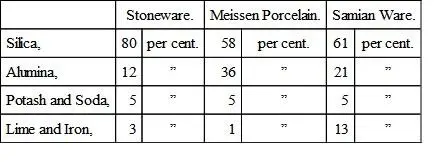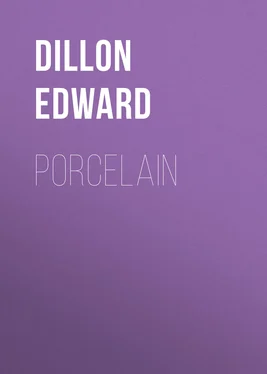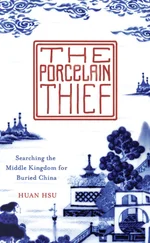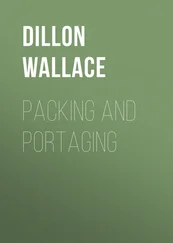Edward Dillon - Porcelain
Здесь есть возможность читать онлайн «Edward Dillon - Porcelain» — ознакомительный отрывок электронной книги совершенно бесплатно, а после прочтения отрывка купить полную версию. В некоторых случаях можно слушать аудио, скачать через торрент в формате fb2 и присутствует краткое содержание. Жанр: foreign_prose, foreign_antique, на английском языке. Описание произведения, (предисловие) а так же отзывы посетителей доступны на портале библиотеки ЛибКат.
- Название:Porcelain
- Автор:
- Жанр:
- Год:неизвестен
- ISBN:нет данных
- Рейтинг книги:4 / 5. Голосов: 1
-
Избранное:Добавить в избранное
- Отзывы:
-
Ваша оценка:
- 80
- 1
- 2
- 3
- 4
- 5
Porcelain: краткое содержание, описание и аннотация
Предлагаем к чтению аннотацию, описание, краткое содержание или предисловие (зависит от того, что написал сам автор книги «Porcelain»). Если вы не нашли необходимую информацию о книге — напишите в комментариях, мы постараемся отыскать её.
Porcelain — читать онлайн ознакомительный отрывок
Ниже представлен текст книги, разбитый по страницам. Система сохранения места последней прочитанной страницы, позволяет с удобством читать онлайн бесплатно книгу «Porcelain», без необходимости каждый раз заново искать на чём Вы остановились. Поставьте закладку, и сможете в любой момент перейти на страницу, на которой закончили чтение.
Интервал:
Закладка:
The relation of porcelain to stoneware on the one hand, and to ordinary pottery on the other, will be made clear by the following figures, which give the composition of stoneware, Meissen porcelain, and of a red Samian ware:—

The refractory stoneware contains a large excess of silica over the amount required to combine with the alumina and the ‘other bases.’ In the easily fusible Roman pottery, the ‘other bases’ nearly equal in amount the alumina, while the Meissen porcelain not only contains less silica than the pottery, but the ‘other bases’ only amount to a sixth part of the alumina present.
But it is not enough for the manufacturer to discover a clay of which the chemical composition corresponds to that of the type of porcelain which he proposes to make. The question, as an experiment of Brongniart long ago proved, is more complicated. Brongniart weighed out the separate constituents for his porcelain—the silica, the alumina, and the alkalis—and from them he formed his paste. He found, however, that the paste readily melted at the heat of the porcelain furnace. The analysis then of any ceramic product can give us but an imperfect clue to the nature and properties of the ware. We want to know how the elements are arranged, and this can only be inferred from a knowledge of the materials employed in the manufacture. I will illustrate this point by comparing the composition of Meissen porcelain with that of our Dorsetshire pipe-clay, the most famous of our English clays, but a material not sufficiently refractory for use in the manufacture of porcelain. Both substances contain the same amount of alumina—36 per cent.; in the Poole clay (after removing the water) there is 55 per cent. of silica and 9 per cent. of ‘other bases,’ against 58 per cent. and 6 per cent. respectively in the porcelain. The composition, therefore, of the two bodies is nearly the same: the clay, while it contains more iron-oxide and lime than the porcelain, is poorer in silica.
True porcelain has indeed never been made from any other materials than those so long employed by the Chinese and first described by the missionary, Père D’Entrecolles, nearly two hundred years ago.
The two essential elements in the composition of porcelain are—( a ) The hydrated silicate of alumina, which is provided by the white earthy clay known as kaolin or china-clay, a substance infusible at the highest temperature attainable by our furnaces (about 1500° C.); ( b ) The silicate of alumina and potash (or more rarely soda), that is to say felspar. But the felspar is generally associated with some amount of both quartz and mica, and is itself in a more or less disintegrated condition. This is the substance known as petuntse or china-stone. It is fusible at the higher temperatures of the porcelain kiln.
Of those substances the first is an immediate product of the weathering of the felspar contained in granitic rocks; while the second, the petuntse, is nothing else than the granite (or allied rock) itself in a more or less weathered condition.
We see, then, that speaking generally, granite is the source of both the materials whose intimate mixture in the state of the finest comminution constitutes the paste of porcelain. It thus happens that it is only in regions of primitive rocks, far away as a rule from centres of industry and indeed from the usual sources of the clay used for fictile ware, that the materials essential for making porcelain are found. By the term granite we mean here a crystalline rock consisting of felspar, quartz, and mica, and we include in the term gneiss, which differs only in the arrangement of its constituents. The many varieties of rock that are named as sources of kaolin and petuntse, such as pegmatite, graphic granite, or growan-stone, are as a rule varieties of granite 4 4 The china-stone of Cornwall might, in part at least, be claimed as an old volcanic rock, and that used in the Imari district of Japan is distinctly of volcanic origin. Both these rocks, however, consist essentially of a mixture of quartz and felspar.
distinguished by containing little or no mica, and above all by the absence of iron in appreciable quantity. As felspar is also the sole or at least the principal element in the glaze with which porcelain is covered, it will be seen that it is the mineral with which we are above all concerned.
Now, of the three minerals that enter into the constitution of these granitic rocks (the others are quartz and mica), felspar is the one most easily acted on by air and water. The carbonic acid which is always present in the surface-water gradually removes the alkaline constituents in the form of soluble carbonates, the silicate of alumina which remains takes up and combines with a certain quantity of water, and in this form it is washed down into hollows to form the beds of white crumbly clay known as kaolin. This is, of course, a somewhat general and theoretical statement of what happens. If we were to examine the actual position and geological relation to the surrounding rocks of the beds of kaolin in Cornwall and in the south-west of France, there might be some exceptions to be made and difficulties to explain. Where, indeed, as in many places in Cornwall, the kaolinisation has extended to great depth, the decomposition may have been caused by deep-seated agencies; in such cases the kaolin is often associated with minerals containing fluorine and boron. 5 5 For further details consult the authorities quoted in the Handbook of the Jermyn Street Collection, p. 5; for sections showing the relation of the beds of kaolin to the surrounding rock, see Brongniart’s Traité des Arts Céramiques , vol. i.
As for the other constituent of porcelain, the petuntse or china-stone, we have called it a disintegrated granite, and this is the condition in which it is usually excavated. It corresponds to the French cailloux , the stony or gravelly material as opposed to the clay. In French works it is not generally distinguished from felspar, and indeed some varieties of petuntse may contain little else. However, if pure felspar is used, the second constituent in granite or in petuntse, I mean quartz, will have to be added to our porcelain paste in the form of sand or powdered flint. The third constituent of the china-stone, the mica, is usually neglected: in many cases the mother rock contains but little, and what there is is eliminated in the washing. Mica is more fusible than felspar; the white variety, muscovite, is practically free from iron, and only from granite rocks containing this variety can petuntse suitable for the manufacture of porcelain be obtained. The importance of mica as an element of the Chinese petuntse has only recently been recognised (Vogt, Comptes Rendus , 1890, p. 43). As much as 40 per cent. of muscovite has been found in samples brought from China. The pegmatite of the Limoges district, on the other hand, contains only 30 per cent. of this white mica, and of this only a small portion passes into the paste. We have here, perhaps, the principal cause of the greater hardness and the higher softening-point of European compared with Oriental porcelain.
We shall see later on that this softer Chinese paste has many advantages, especially in its relation to the glaze and the enamels, but for the present we will continue to take the more ‘severe’ European porcelain as our type.
Let us consider what takes place during the firing of a paste of this latter description. After all the water, including that in combination in the kaolin, has been driven off, we have, as the temperature rises, an intimate mixture of two silicates, one of which, if heated alone, would be unaltered by any temperature at our command—this is the silicate of alumina derived from the kaolin; while the other is a fusible silicate of alumina and potash. There is also present a certain amount of free silica. There is reason to believe that at a certain point a chemical reaction takes place between these constituents, accompanied by a local rapid rise of temperature in the materials, the rise being due to this reaction. As a result there is a rearrangement of the molecules of the mass, although no complete fusion takes place. It is now, says M. Vernadsky ( Comptes Rendus , 1890, p. 1377)—we are now following the account of his experiments—that the sub-crystalline rods—the baculites of which we have already spoken—are formed. M. Vernadsky claims to have separated these rods from the glassy base by means of hydrofluoric acid, in which the former were insoluble. He found them to consist of a very basic silicate of alumina, containing as much as 70 per cent. of that earth, while the glassy base was chiefly composed of silica in combination with the potash and with a small quantity of alumina. In their optical properties the crystals or baculites resemble the mineral known as sillimanite, a natural silicate of alumina.
Читать дальшеИнтервал:
Закладка:
Похожие книги на «Porcelain»
Представляем Вашему вниманию похожие книги на «Porcelain» списком для выбора. Мы отобрали схожую по названию и смыслу литературу в надежде предоставить читателям больше вариантов отыскать новые, интересные, ещё непрочитанные произведения.
Обсуждение, отзывы о книге «Porcelain» и просто собственные мнения читателей. Оставьте ваши комментарии, напишите, что Вы думаете о произведении, его смысле или главных героях. Укажите что конкретно понравилось, а что нет, и почему Вы так считаете.












